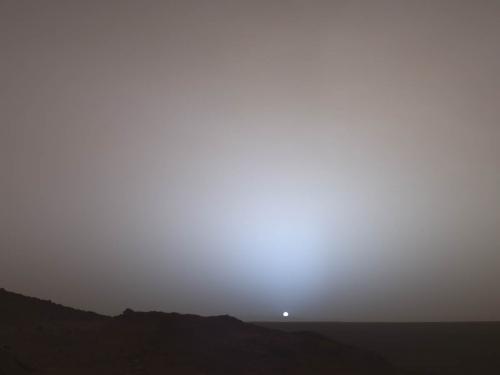
Stories of daring, stories of technological feats, stories of prevailing against the odds ... these are the stories we tell at the National Air and Space Museum. Dive in to the stories below to discover, learn, and be inspired.
Showing 111 - 120 of 145

May 14, 2015
It all started at a special public lecture at the Museum in July 2014 given by Alan Stern, the lead scientist for the New Horizons mission, which will fly past Pluto this July. Among the attendees was William Lowell Putnam IV, sole trustee of the Lowell Observatory in Flagstaff, Arizona—the place where Pluto was found in 1930 by Clyde Tombaugh. It was an exciting evening, not only to learn about the impending flyby but also having a chance to speak with Putnam and the director of the Lowell Observatory, Jeff Hall.

April 30, 2015
Today, the MESSENGER spacecraft will succumb to the influence of gravity and impact on the surface of Mercury

January 16, 2015
A full-size engineering model of the Pioneer 10 /11 spacecraft normally hangs in the Boeing Milestones of Flight Hall at the National Air and Space Museum. However, a few weeks ago it was removed and placed in the Mary Baker Engen Restoration Hangar at the Steven F. Udvar-Hazy Center in Chantilly, Virginia, while the Milestones gallery undergoes a major renovation in the coming months.

December 08, 2014
Venus has almost the same diameter as the Earth and is the next closest planet to the Sun. The similarity ends with the weather report, however. The surface temperature is more than 465 o C (870o F) and atmospheric pressure is 90 times that of Earth. The surface is hidden from view by a dense blanket of clouds, so we must use radar systems to “see” the landscape below.

January 07, 2014
For the last ten years the missions of the Mars Exploration Rovers, Spirit and Opportunity, have brought breathtaking images of Mars back to Earth.

September 18, 2013
Director of the Jet Propulsion Laboratory (JPL) from 1976 to 1982, Bruce Murray was a geologist whose vision was never earthbound. He earned his PhD from MIT and served two years in the U.S. Air Force before joining the California Institute of Technology (Caltech) in 1960. Caltech manages JPL for NASA, and soon Murray was working on JPL’s Mariner missions to Mars. During his tenure as director of JPL, the Viking spacecraft landed on Mars and the Voyagers began exploring the outer solar system. He also oversaw Earth orbital missions, including Seasat, the Solar Mesosphere Explorer, and Shuttle Imaging Radar-A.

August 20, 2013
The Viking program represents a major effort by the United States to explore Mars, with the particular goal of performing experiments on Martian soil to look for possible evidence of life. Four individual spacecraft were sent to Mars as part of the Viking project, two orbiters and two landers, launched as identical orbiter/lander pairs.

March 11, 2013
How do you illustrate a non-fiction book for kids based on the former ninth planet? Some people still have some pretty strong feelings about Pluto’s demotion: protest signs, student protest speeches, public demonstrations. Cries of unfairness could be heard when news of poor Pluto’s removal from the planetary ranks occurred. It is the intention of this new children’s book to set the story straight or at least attempt to share “Pluto’s side of the story." I‘ve worked in the children’s book market as a freelance illustrator for several years in addition to my full-time job with the Museum’s Early Childhood program. My latest book assignment from Abrams Books for Young Readers, Pluto's Secret: an icy World's Tale of Discovery, connected my job as an artist and an educator.

March 08, 2013
How did three staff members at the National Air and Space Museum get to collaborate on the Museum’s first children’s book, Pluto’s Secret: An Icy World’s Tale of Discovery? The short answer is that this is an extraordinary place to work. And when people are as generous with their time and talents as my collaborators have been, neat stuff happens.

March 04, 2013
Yes, the sky is falling. The asteroid impact that took place in Chelyabinsk, Russia, on February 15, 2013, has jump-started an international conversation about planetary protection and whether or not there is a really big asteroid/meteor/comet out there with our name on it. There is, we just haven’t found it yet. Miniscule objects enter the atmosphere all the time; occasionally larger objects come down—the Tunguska (1908) and Chelyabinsk (2013) events are prime examples of this—and once in a very great while a mass extinction impact takes place as in the Cretaceous–Paleogene extinction event of 66-65 million years ago that wiped out the dinosaurs.
